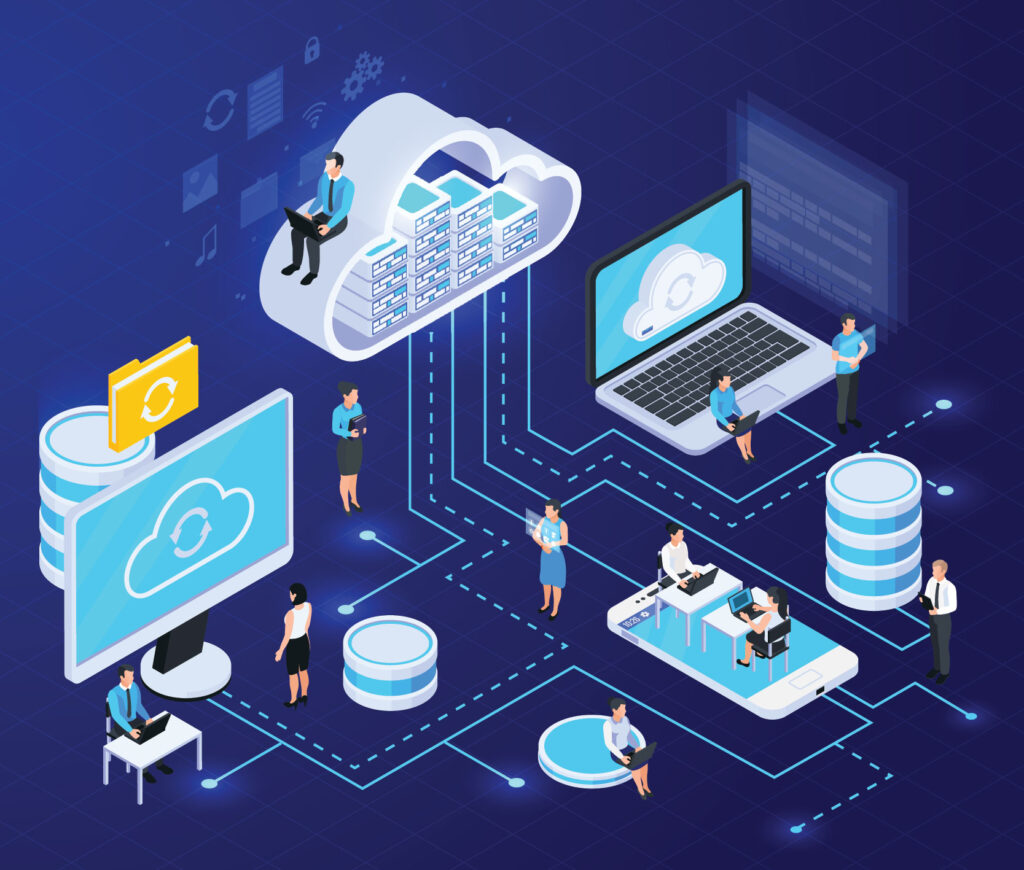Cloud Computing
Cloud Computing:
Cloud computing is a space where we can store our data like Google cloud computing. Cloud computing is a type of server through which we can access data from anywhere online.
Benefit of cloud computing:
This advantage of cloud computing is that we can use our data anywhere, we do not require any external device, hence it is better for us. With cloud computing, we can use our data anytime, anywhere.
Cloud computing is a model for delivering computing services over the internet, providing access to a shared pool of resources—including computing power, storage, databases, networking, and software—on-demand, without the need for users to own or manage the underlying infrastructure.
Here’s an overview of cloud computing:
1.On-Demand Self-Service: Cloud computing allows users to provision computing resources (such as virtual machines, storage, or applications) on-demand, without requiring human intervention from the service provider. Users can quickly and easily access resources as needed through self-service portals or APIs.
2.Broad Network Access: Cloud computing services are accessible over the internet from any device with an internet connection and a web browser. Users can access cloud services from desktop computers, laptops, tablets, smartphones, and other internet-enabled devices, enabling flexible and remote access to computing resources.
3.Resource Pooling: Cloud computing providers pool together computing resources—such as servers, storage, and networking—across multiple users and organizations, dynamically allocating and reallocating resources as needed to meet demand. This allows for efficient utilization of resources and economies of scale, reducing costs for users.
4.Rapid Elasticity: Cloud computing services can scale up or down dynamically to accommodate changes in demand, allowing users to quickly scale resources in response to fluctuations in workload or user activity. This elasticity enables organizations to handle peak loads without over-provisioning resources, optimizing resource utilization and cost efficiency.
5.Measured Service: Cloud computing services are typically metered and billed based on usage, allowing users to pay only for the resources they consume. Metering and monitoring tools provide visibility into resource usage, performance metrics, and costs, enabling users to optimize resource allocation and manage expenses more effectively.
6.Service Models: Cloud computing offers different service models to meet diverse user needs:
– Infrastructure as a Service (IaaS)**: Provides virtualized computing infrastructure, such as virtual machines, storage, and networking, on-demand.
– Platform as a Service (PaaS)**: Provides a platform for developing, deploying, and managing applications without the complexity of managing underlying infrastructure.
– Software as a Service (SaaS)**: Delivers software applications over the internet on a subscription basis, eliminating the need for users to install, maintain, and manage the software locally.
7.Deployment Models: Cloud computing offers different deployment models to suit various use cases and requirements:
Public Cloud: Cloud services are provided and managed by third-party cloud service providers and made available to the general public over the internet.
Private Cloud: Cloud services are provisioned and managed within an organization’s own infrastructure or data centers, providing greater control, customization, and security.
Hybrid Cloud: Combines elements of public and private clouds, allowing data and applications to be distributed across multiple environments and enabling seamless integration and interoperability between them.
Overall, cloud computing offers numerous benefits, including scalability, flexibility, cost efficiency, and agility, making it a popular choice for organizations of all sizes and industries to modernize their IT infrastructure, enhance productivity, and drive innovation in today’s digital economy.


 admin
admin